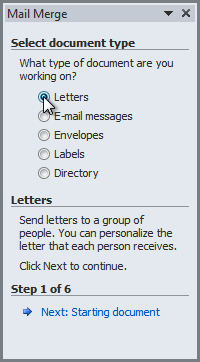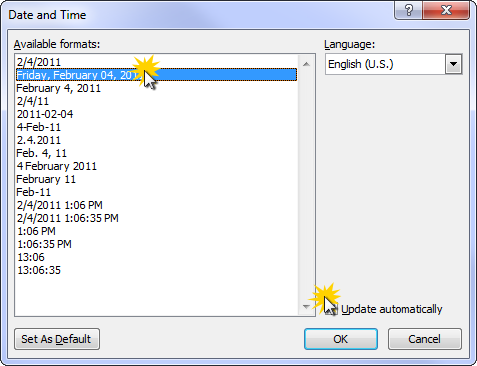
For the data source, you can use your Outlook Contacts list, create a new list of addresses that can be reused afterwards to send other e-mail messages, or use an Office address list that is already stored in a mailing database (.mdb) file, an Excel worksheet, an Access database, or a data file of another type. In the case of e-mail messages, the mail merge process combines the content in the main document with the list of e-mail addresses of the recipients and other optional information about them that are stored in the associated data source to generate and send a set of e-mail messages. The Word mail merge process typically generates a set of documents or document elements, which contain both content that is common to all the documents or document elements in the set and specific information that can be different in each merged document or element, from two documents, which are called the main document and the data source. If you do not have any e-mail account configured, click Close and follow the instructions in the Microsoft help topic Add or Remove an Email Account (for Outlook 2010) or Add or Remove an E-Mail Account in Outlook 2007 to set up and configure an e-mail account. In the Account Settings dialog box, if you have more than one e-mail account in the list, you can set one of the accounts as the default account for sending messages by selecting it and clicking Set as Default. On the Tools menu, click Account Settings. Before starting the mail merge process, verify that you have an e-mail account configured in Outlook and, if you have more than one e-mail account configured, select the default e-mail account that will be used to send your e-mail messages. It is also possible to use a different MAPI (Messaging Application Program Interface) application in which you have configured an e-mail account for sending messages, but that possibility is beyond the scope of this page. In order to send any e-mail message from Word, you must have at least one e-mail account configured in Office Outlook, and Outlook must be open. E-Mailing Word Documents without Using Mail Merge.Note that you need to use only the one procedure that is suitable for your purposes and your version of Word. The last section contains the simple procedures for e-mailing Word documents without using the mail merge feature. The first provides a general description of the mail merge process, and the next three sections contain step-by-step procedures for implementing the mail merge process in different situations. The rest of this page is divided into the following six sections.
MASSIVE MAIL MERGE IN WORD 2010 HOW TO
After you know how to accomplish this relatively simple task with it, you will be ready to move on to tasks of increasingly greater complexity. This page presents a simple tutorial that will show you how you can easily use the Word mail merge feature to send personalized e-mail messages and introduces you to the power of this feature. Although it may seem at first to be an advanced feature, using it to generate and send individual personalized e-mail messages that have only one e-mail address on the To line is fairly simple. The Word mail merge feature is a powerful and versatile tool that can be used for many purposes. If you need to send an e-mail message to a group of recipients and you do not want to disclose their e-mail addresses or their identities to the other recipients, you can use the Word mail merge feature to generate individual personalized e-mail messages with the same basic text that will be sent to each recipient with only one individual recipient's e-mail address on the To line. However, many spam filters treat such messages as spam and block them from reaching their destinations. Some users try to get around these problems by inserting the e-mail addresses of the intended recipients on the Bcc line. You also may not want your recipients to see their names somewhere down a long list. You yourself may not always want your recipients to know your complete mailing list. Some recipients may even feel that their privacy was invaded.

However, sometimes some of the recipients do not want their e-mail address revealed to all the other recipients.

In such cases it may even be useful for all the recipients to know who else received the message, and generally no harm is done. Sometimes all the recipients know one another or work together, and each recipient already knows or can easily obtain the e-mail addresses of all the other recipients. Everyone who uses e-mail has probably received an e-mail message with many recipients on the To line.


 0 kommentar(er)
0 kommentar(er)
